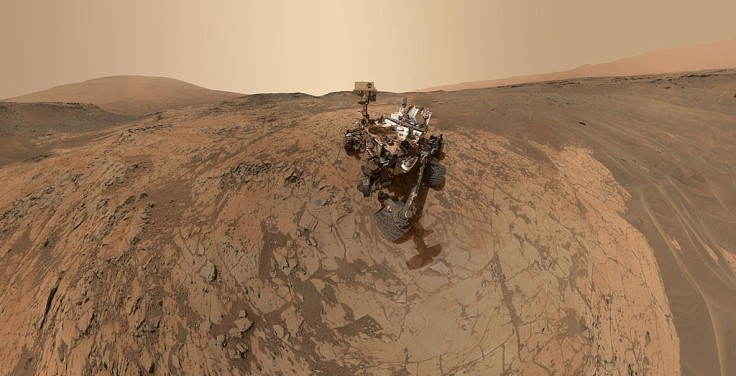
While it has been in Mars for over a decade now, the NASA Curiosity rover continues to spark the interest of many. Every discovery it makes generates headlines, and for good reason.
The instrument has certainly been beneficial to mankind in its quest to improve space exploration. However, while it remains popular, there are some surprising things that people don't know about it apart from its mission.
NASA Curiosity Rover
According to NASA's Space Place, Mars rovers are wheeled instruments that specialize in navigating, adding that they have landed on Mars' surface and travel around to various locations.
Mars rovers help scientists in their mission to learn more about the composition of the planet's several regions. Additionally, the red planet is made up of a variety of rocks, each of which is made up of various chemical combinations.
The wheeled instruments can explore numerous locations and investigate the various compounds found in each rock. The components discovered by the rover can provide information about the surroundings that influenced the evolution of the rock.
There are five Mars rovers launched onto the planet. Each of the launched rovers has its specialties and missions. Obviously, one of them is the Curiosity rover.
According to NASA, it was launched on Nov. 26, 2011 and landed on the red planet at 10:32 p.m. PDT on Aug. 5, 2012 (1:32 a.m. EDT on Aug. 6, 2012). The curiosity rover is part of the Mars Science Laboratory mission of the space agency.
With regards to its mission, it aims to provide answers to the scientific question: "Did Mars ever have the right environmental conditions to support small life forms called microbes?"
Aside from that, here are 10 other things to know about the Curiosity rover.
10 Things To Know About Curiosity Rover
10. Curiosity Rover Is the Mars SUV
Space.com explained that Curiosity's size is one of the things that sets it apart from others since it has the size of a compact SUV.
To explain its dimension, this Mars rover has a height of roughly 7 feet (2.1 m) and 9 feet 10 inches long by 9 feet 1 inch wide (3 m by 2.8 m). It is also said to weigh 2,000 pounds (900 kg).
Meanwhile, the wheels of Curiosity are 20 inches (50.8 cm) in diameter.
9. Curiosity Rover Experienced a Complicated Landing
Due to Curiosity's weight, NASA assessed that their approach of rolling with land bags to get it to the Martian surface would most likely not work. Instead, the rover had to go through a lengthy series of maneuvers to land.
The Curiosity landing experience was referred to as "Seven Minutes of Terror" by the space agency.
8. It Has Another Name
Space Center reported that this Mars rover is not only called Curiosity. In fact, it also has a more technical name, which is the Mars Science Laboratory.
Since that is considerably lengthy, Curiosity has become its popular name. In reality, NASA uses the terms alternately, although the mission is known as the Mars Science Laboratory.
7. Curiosity Continues to Operate More Than Its Required Lifespan
A radioisotope power system is installed in Curiosity, with the heat emitted by the plutonium's radioactive decay being used to create power in its system.
NASA emphasized through Space Center that this power source has outlasted its required operating lifespan of at least one Martian year or 687 Earth days.
Curiosity's design is demonstrated by the fact that it has been traveling around Mars' surface for 10 years now.
6. Perseverance Rover Is Based on Curiosity
The other Martian rover, referred to as Perseverance, was structurally modeled after Curiosity to keep both risks and costs low.
Despite their likeness, Perseverance is going a step farther than Curiosity by looking for evidence of previous microbial life. Previous missions have focused on determining if mars can support life, but Perseverance will try to assess both past habitability and look for indications of previous life on the Martian continent.
5. Curiosity Rover Discovered Ancient Lakes on Mars
In 2015, NASA's Mars Science Laboratory or Curiosity discovered that billions of years ago, Mars was capable of retaining water in lakes for long periods.
Using data from Curiosity, NASA found out that water helped deposit sediment into the Gale Crater--where the rover landed in 2012.
4. People Can Drive Curiosity Rover Virtually
For those who want to explore the Martian planet, NASA released a website where people can navigate a virtual version of the Curiosity rover on Mars. To do so, interested people must click this link.
3. Curiosity Captured 1.8 Billion-Pixel Panorama on Mars
The space agency claimed that the 1.8 billion-pixel panorama photo captured by Curiosity is the biggest and best resolution panorama the rover has ever acquired.
2. Curiosity Shares Its Captured Raw Images
In case people are wondering about its captured photos, it is worth noting that the rover sends its raw images from Mars. To access these photos, head to this link.
1. Rewatch Its 'Seven Minutes Of Terror'
People can rewatch the tense moments leading up to Curiosity's landing on Mars, as well as the celebrations that followed. Apart from this, people may also use NASA's free Eyes on the Solar System program to experience the full landing procedure in 3-D on their computer.
Related Article : 10 Things to Know About NASA's Perseverance Rover









